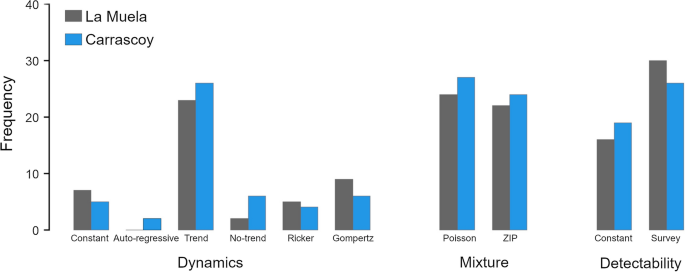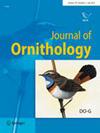Long-term trends of local bird populations based on monitoring schemes: are they suitable for justifying management measures?
IF 1.3
4区 生物学
Q2 Agricultural and Biological Sciences
引用次数: 0
Abstract
Abstract Local biodiversity monitoring is important to assess the effects of global change, but also to evaluate the performance of landscape and wildlife protection, since large-scale assessments may buffer local fluctuations, rare species tend to be underrepresented, and management actions are usually implemented on local scales. We estimated population trends of 58 bird species using open-population N-mixture models based on count data in two localities in southeastern Spain, which have been collected according to a citizen science monitoring program (SACRE, Monitoring Common Breeding Birds in Spain) over 21 and 15 years, respectively. We performed different abundance models for each species and study area, accounting for imperfect detection of individuals in replicated counts. After selecting the best models for each species and study area, empirical Bayes methods were used for estimating abundances, which allowed us to calculate population growth rates ( λ ) and finally population trends. We also compared the two local population trends and related them with national and European trends, and species functional traits (phenological status, dietary, and habitat specialization characteristics). Our results showed increasing trends for most species, but a weak correlation between populations of the same species from both study areas. In general, local population trends were consistent with the trends observed at national and continental scales, although contrasting patterns exist for several species, mainly with increasing local trends and decreasing Spanish and European trends. Moreover, we found no evidence of a relationship between population trends and species traits. We conclude that using open-population N-mixture models is an appropriate method to estimate population trends, and that citizen science-based monitoring schemes can be a source of data for such analyses. This modeling approach can help managers to assess the effectiveness of their actions at the local level in the context of global change.

基于监测计划的本地鸟类种群的长期趋势:这些趋势是否适合采取合理的管理措施?
局部生物多样性监测不仅对评估全球变化的影响具有重要意义,而且对评估景观和野生动物保护的绩效也具有重要意义,因为大规模评估可能缓冲局部波动,稀有物种往往代表性不足,管理行动通常在局部尺度上实施。本文采用开放种群n-混合模型对西班牙东南部两个地区58种鸟类的种群趋势进行了估计,这些数据分别来自于一个公民科学监测项目(SACRE, monitoring Common Breeding Birds in Spain)收集的21年和15年的统计数据。我们对每个物种和研究区域进行了不同的丰度模型,考虑到重复计数中个体检测的不完善。在为每个物种和研究区域选择最佳模型后,使用经验贝叶斯方法估算丰度,从而计算出种群增长率(λ),最终得出种群趋势。我们还比较了两种地方种群趋势,并将其与国家和欧洲趋势以及物种功能特征(物候状况、饮食和生境专业化特征)联系起来。结果表明,大多数物种的种群数量呈上升趋势,但两个研究区同一物种种群之间的相关性较弱。总体而言,当地种群趋势与在国家和大陆尺度上观察到的趋势一致,尽管一些物种存在不同的模式,主要是当地趋势增加而西班牙和欧洲趋势减少。此外,我们没有发现种群趋势与物种特征之间存在关系的证据。我们得出结论,使用开放种群n混合模型是估计种群趋势的合适方法,基于公民科学的监测方案可以作为此类分析的数据来源。这种建模方法可以帮助管理人员在全球变化的背景下评估他们在地方一级的行动的有效性。
本文章由计算机程序翻译,如有差异,请以英文原文为准。
求助全文
约1分钟内获得全文
求助全文
来源期刊

Journal of Ornithology
生物-鸟类学
自引率
7.70%
发文量
0
审稿时长
3-8 weeks
期刊介绍:
The Journal of Ornithology (formerly Journal für Ornithologie) is the official journal of the German Ornithologists'' Society (http://www.do-g.de/ ) and has been the Society´s periodical since 1853, making it the oldest still existing ornithological journal worldwide.
 求助内容:
求助内容: 应助结果提醒方式:
应助结果提醒方式:


